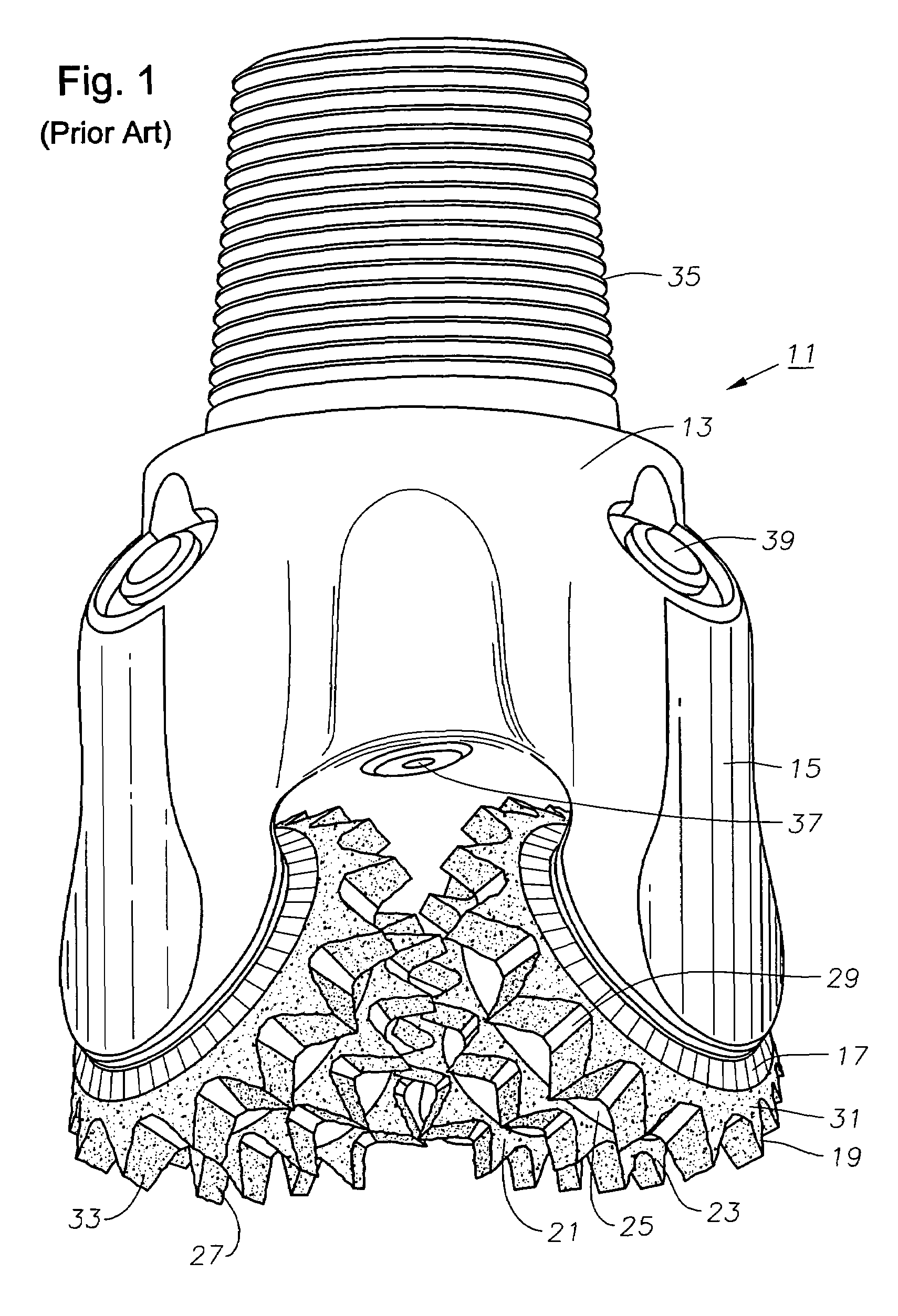Rotary rock bit with hardfacing to reduce cone erosion
a technology of hardfacing and rotary rock bits, which is applied in the field of earthboring bits, can solve the problems of sand particles that remain on the borehole bottom, affecting the cutting structure and the cutting shell, and affecting the cutting effect of the cutting structur
- Summary
- Abstract
- Description
- Claims
- Application Information
AI Technical Summary
Benefits of technology
Problems solved by technology
Method used
Image
Examples
Embodiment Construction
[0012]Referring to FIG. 1, bit 11 illustrates a conventional earth-boring bit, having a body 13 with three bit legs 15 depending therefrom. A cone 17 is rotatably mounted to each of the bit legs 15. Each cone 17 is formed of a steel shell or body. Each cone 17 of bit 11 has three rows of teeth 27, including an outer row 19, an inner row 21 and an intermediate row 23. However, it is common for cones 17 to have different numbers of rows, such as only two rows. A conical band 25 is located between the rows 19 and 21 and the rows 21 and 23.
[0013]The teeth 27 within each row 19, 21 and 23 are milled or machined from the body of cone 17. Each tooth 27 is separated from adjacent teeth in the same row by a valley 29. The base of valley 29 may be concave or U-shaped, as shown. Alternately, the base of each valley 29 may be convex if teeth 27 in a particular row are spaced far enough apart from each other. Outer rows 19 are located closest to a gage surface 31 that defines the diameter of the...
PUM
 Login to View More
Login to View More Abstract
Description
Claims
Application Information
 Login to View More
Login to View More - R&D
- Intellectual Property
- Life Sciences
- Materials
- Tech Scout
- Unparalleled Data Quality
- Higher Quality Content
- 60% Fewer Hallucinations
Browse by: Latest US Patents, China's latest patents, Technical Efficacy Thesaurus, Application Domain, Technology Topic, Popular Technical Reports.
© 2025 PatSnap. All rights reserved.Legal|Privacy policy|Modern Slavery Act Transparency Statement|Sitemap|About US| Contact US: help@patsnap.com



